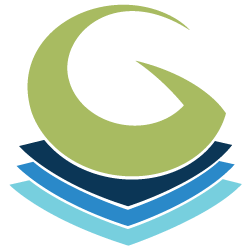 Global Mapper Pro
Global Mapper Pro
Global Mapper Pro is an optional add-on to the Global Mapper program that provides several advanced GIS tools designed to take your work to the next level. These features do include lidar processing and analysis tools but also many other features for advanced terrain analysis and workflow optimization. The Global Mapper Pro suite of professional-grade GIS tools is THE essential suite for today’s GIS professional.
Many of the lidar processing tools, including the Pixels to Points tool for generating photogrammetrically derived point clouds from UAV or drone collected imagery, can be leveraged through the Lidar toolbars, with additional options added to Lidar Load Options, Lidar Export, and other menus that will enhance the handling of lidar and point cloud data within the Global Mapper application. The advanced terrain and image analysis tools include manual terrain editing, automatic breakline creation, and a seamless raster vectorization tool accessed from the Analysis and Layer menus. Global Mapper Pro includes a Script Editor dialog as well as Python script integration. Scripts written in Python can be created and run in the Global Mapper application, or in a Python environment.
If you are interested in evaluating Global Mapper Pro you can request
an evaluation license
for it under the Help menu and to purchase, visit the purchase
page on our website.
Advanced Lidar Functionality
- Access to the Lidar Toolbar for easier management and editing of data.
- Path/Profile Viewer allowing users to view Lidar points directly in the path profile display window. Users can also directly edit Lidar points and manipulate Lidar classifications from the path profile view.
- Dramatically faster gridding of point cloud data and support for min/max/average gridding operations on Lidar point clouds.
- Automatic classification tools for unclassified point clouds, incluidng ground, building, trees, powerlines and pole objects.
- Feature extraction tools from classified point clouds. This includes buildings, trees, powerlines and poles.
- Additional Lidar format support including E57, Leica PTS and BPF .
- The ability to display Lidar points by height above ground to visualize vegetation and building heights.
- A Lidar Options tab in the configuration window to allow easily filtering by classification and/or return type.
- Support for reporting Lidar statistics via script to a text file to facility QA processes.
- Colorize Lidar points from loaded imagery in memory, no export required.
- Color loaded elevation data (including Lidar) with the shader using the elevation range on-screen rather the full data range. This makes it easy to see terrain differences even in flat areas while zoomed in.
- Read/write and additional display support for the NIR data in LAS 1.4.
- Additional Export Options for the Lidar LAS format.
- Support for multi-band colored Lidar points.
- Change Detection between point clouds using the Compare Point Clouds tool
- Auto-alignment of point clouds using the Fit Point Clouds tool or vertical alignment and statistics for the QC of Lidar Data
- Explore vertical offset between swaths with the Create Swath Separation Image tool that aligns with the USGS Base Lidar Specification
- Custom feature extraction from point cloud data through the Path Profile/LOS view
- Additional Create Elevation Grid options and methods
- Lidar classification colors can be changed and customized in the Lidar section found in the Configuration
- Specialized Lidar import options will be included in Lidar Load Options that allow for quicker import, and additional filtering options.
- Expanded options in Lidar/Terrain Display Controls provide access to real-time, interactive filtering and visualization controls for point cloud data.
- Classifications can be manually applied with ease using the Manual Classification toolset.
Photo Generated Point Clouds and Models
The Pixels to Points® tool uses photogrammetry methods to create 3D point clouds, orthoimages or photo-textured 3D Models from overlapping images, typically collected from a drone / UAV / UAS.
Image and Terrain Creation and Analysis
- Terrain Painting for manually altering digital terrain models
- Generate Breaklines from Terrain Grid to create vector line features at distinct changes in elevation/slope
- A Vectorize Raster tool to extract and smooth vector areas from raster image and terrain layers
- Create a kriged estimate grid using the Variography and Kriging analysis tool
Vector Feature Creation
- A Create Volumetric 3D Mesh Buffer Features tool to generate 3D mesh buffer features from existing points, lines, and polygons.
- Options supporting multiple methods to Create Mesh from Selected Lidar
Scripting Tools
- Script Editor dialog with syntax coloring for building, editing, and running scripts
- Script Builder for easily generating Global Mapper Script commands based on interaction with the program user interface
- Python programming language integration